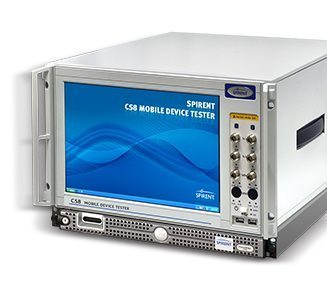Editor’s Note: The ability to test network and device features and functions is an important piece of technology development and deployment. RCR Wireless News looks weekly at the test and measurement space to see what’s afoot.
–This week I spoke with Spirent Communications’ Guy Merrit, VP of the company’s wireless products group, about news it announced in conjunction with the APCO conference for public safety. Spirent has been working on improving location testing for E911 for voice over LTE so that carriers, original equipment manufacturers and chip makers can see how well their technology works at locating a user – obviously a pretty critical piece of the puzzle, and one that regulators want to see done within a tight limit of accuracy.
Merrit noted that 70% of 911 calls now come via mobile phones, and a majority of those on mobile originate from indoors – where satellite/GNSS system signals are likely to be blocked and also in a more complex RF environment.
“Our reliance on this is ever more critical. Now, when we start to introduce E911 on VoLTE, we have to make sure that it’s as reliable as we believe we can make it,” he said.
Being indoors also adds the challenge of a third dimension: locating the user in relation to height, which floor they are on in a multi-story building. Having the correct floor information is crucial for first responders.
Spirent had added new test capabilities to its 8100 Location Technology Solution for VoLTE E911 support. The system supports observed time difference of arrival, which is part of the LTE standard and can augment A-GNSS. In particular, it’s the OTDOA position calculation function that’s important here, since PCF enables more detailed verification of the device’s position. Merrit said that the positioning reference signal is able to be injected into various scenarios in order to test the quality of the location measurement and the optimization of the PRF, which has to be accurately aligned with an operator’s known tower positions in order to be useful in obtaining location information that is as precise as possible. Real-world systems are able to get accuracy in the range of 50 meters to 200 meters, and Spirent’s test system reflects that, Merrit said.
As far as that third dimension, location in relation to height relies on sensors within a device, for barometric pressure that can be correlated with gravitational pressure. The system tests sensor technology as well, along with Wi-Fi for positioning purposes.
—National Instruments had a couple of noteworthy product launches this week at #NIWeek in Austin, TX. It followed up on its first software-designed vector signal transceiver, which it introduced two years ago, with new software-designed instruments for automated test and research applications in wireless and mobile devices, semiconductor testing, automotive testing and aerospace-defense.
The user-programmable instruments include an eight-channel oscilloscope, an RF vector signal analyzer, and intermediate frequency digitizer, and a high-speed serial instrument. They have the graphical data flow of LabView software that does not require specialized languages like VDHL or Verilog, NI said – and also don’t require payments to test instrument vendors for customization.
“Providing a user-programmable FPGA can lead to astounding benefits for the customer, enabling them to drill down into the instrument and change the performance drastically,” said Prathima Bommakanti, industry analyst for measurement and instrumentation at Frost & Sullivan. “With this new class of instrumentation, users are able to turn the instrument into whatever they need, a paradigm shift in an industry in which products have essentially been defined by the vendor as opposed to the customer.”
“Requirements for RF test are constantly changing and quickly emerging,” said Christian Pfefferer, global test engineer for Valeo. “User-programmable FPGAs provide the flexibility needed to keep up with the expanding requirements in RF test, helping us meet our current RF test specifications for spectrum measurements, but also making us well prepared to address future needs.”
NI also launched a new semiconductor test system series this week. The three models of PXI-based automated test systems have an open, modular architecture and are designed for providing faster testing at a lower cost for chip production test environments by enabling users to perform both characterization and production with the same hardware and software tools, according to NI.
“Traditional ATE systems require major costly retooling efforts on the test floor as generations of test systems become obsolete or unable to meet new test requirements, but the nature of the open PXI architecture of the STS helps us retain our original investment and build upon it, rather than throw it away,” said Glen Peer, director of test for Integrated Device Technology. “It provides the flexibility we need to reconfigure and grow our test platforms in parallel with our growing performance needs.”
–RCR’s Jeff Mucci spoke with Dr. Ted Rappaport, founder of NYU Wireless, on his program, NI and 5G, during NI’s #NIWeek conference — check out the interview:

